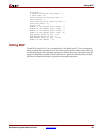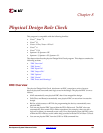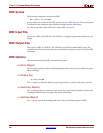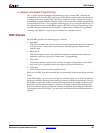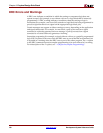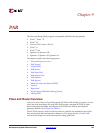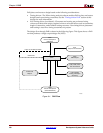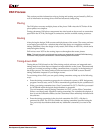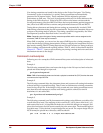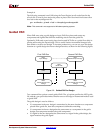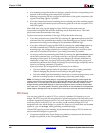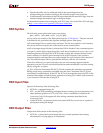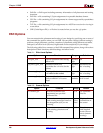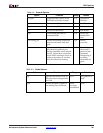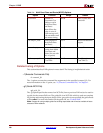
Development System Reference Guide www.xilinx.com 161
PAR Process
R
PAR Process
This section provides information on how placing and routing are performed by PAR, as
well as information on timing-driven PAR and automatic timespecing.
Placing
The PAR placer executes multiple phases of the placer. PAR writes the NCD after all the
placer phases are complete.
During placement, PAR places components into sites based on factors such as constraints
specified in the PCF file, the length of connections, and the available routing resources.
Routing
After placing the design, PAR executes multiple phases of the router. The router performs
a converging procedure for a solution that routes the design to completion and meets
timing constraints. Once the design is fully routed, PAR writes an NCD file, which can be
analyzed against timing.
PAR writes a new NCD as the routing improves throughout the router phases.
Note:
Timing-driven place and timing-driven routing are automatically invoked if PAR finds timing
constraints in the physical constraints file. See the following section for details.
Timing-driven PAR
Timing-driven PAR is based on the Xilinx timing analysis software, an integrated static
timing analysis tool that does not depend on input stimulus to the circuit. Placement and
routing are executed according to timing constraints that you specify in the beginning of
the design process. The timing analysis software interacts with PAR to ensure that the
timing constraints imposed on your design are met.
To use timing-driven PAR, you can specify timing constraints using any of the following
ways:
• Enter the timing constraints as properties in a schematic capture or HDL design entry
program. In most cases, an NCF will be automatically generated by the synthesis tool.
• Write your timing constraints into a User Constraints File (UCF). This file is processed
by NGDBuild when the logical design database is generated.
To avoid manually entering timing constraints in a UCF, use the Xilinx Constraints
Editor, a tool that greatly simplifies creating constraints. For a detailed description of
how to use the Constraints Editor, see the Constraints Editor online help included with
the software.
• Enter the timing constraints in the physical constraints file (PCF), a file that is
generated by MAP. The PCF file contains any timing constraints specified using the
two previously described methods and any additional constraints you enter in the
file.



